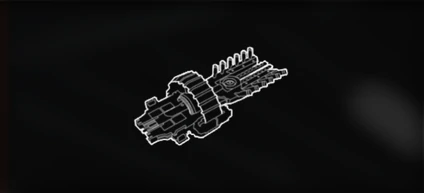JOURNEY OF A COMMANDER PART 29
20 Aug 2023Ni6h70wl
27.02.3308 - Novara Expedition Day 157

Arrival in the system Chao Thua CK-I d9-17, already after activating the FSS scan I couldn't help smiling.
"Another Earth-like world, we are really lucky on our journey."
"That's right, the data show that it weighs two Earth masses and is relatively warm compared to Earth. It's probably due to volcanism. The average temperature is a good 20K warmer and the equatorial region, too hot for complex life forms."
After mapping the surface of the planet, I took the time to scan the remaining planets in this system. This guarantees that we are the only ones who have discovered and mapped this system.
05.03.3308 - Novara Expedition Day 163
_05.03.2022_18_45_50.png)
We continued our journey and discovered our first undiscovered white dwarf and a CN star today.
A carbon star is a star at the end of its evolution and usually belongs to the red giants. I have already reported on this type of star in more detail.
The white dwarf should be treated with caution; these planet-sized stellar cores still have the mass of a star and thus a corresponding gravitational pull. The inexperienced pilot overlooks this quite quickly and lands in the close range of the dwarf. The consequences are downright devastating, not only that the ship is thrown out of the supercruise, no, the high temperature, radiation and gravity tug at the ship's hull and would tear it apart if the pilot did not immediately align himself with an escape vector and increase the distance.
The FSD can also be charged on white dwarfs, but since the particle radiation is much lower, the charge is only enough for a 50% greater jump range.
White dwarf
Despite its high surface temperature, it has only a very low luminosity, which means it lies far below the main sequence in the Hertzsprung-Russell diagram. It owes its white colour to the high temperature, and its low luminosity - which indicates a correspondingly small stellar surface - to the designation "dwarf". While main sequence stars like the Sun have radii in the order of hundreds of Earth radii, the radius of a white dwarf, at 7,000 to 14,000 km, is only 1 to 2 Earth radii. Nevertheless, white dwarfs have the mass of a star. They normally consist of a core of hot degenerate matter of extremely high density, surrounded by a thin, luminous photosphere.
White dwarfs are the final stage in the evolution of most stars after the end of all nuclear fusion, when their nuclear energy supply has run out. They are the hot cores of red giants that remain when they shed their outer shells. The prerequisite for this is that the residual mass remains below a threshold value of 1.44 solar masses (M☉), the so-called Chandrasekhar limit. Otherwise, a neutron star or a black hole will form after a supernova eruption. Since Sol, with one solar mass, is well below the critical mass, its fate will be that of a white dwarf.

To make faster progress and especially to leave this star-poor region, I used the boost of a neutron star several times. Until the next day, it came as it had to come.
06.03.3308 - Novara Expedition Day 164
The first jump of the day and already it was crowned with success. The system Skueqoo BV-Y d1 is a double star system with a neutron star of 0.85 SM and a K-star of 0.66 SM.
The neutron star has no companions and is 76,335 ls or 153 AU away from the K-star. Based on the mass of the neutron star, it is probably a former class B star with over 10 solar masses. The system itself is 11.288 billion years old and thus significantly older than Sol.
The FSS detected an Earth-like world in orbit around the K star. After I had charged up the FSD in the tail of the neutron star, I set course towards the Earth-like world.

After just 10 minutes we had reached the target and the probes for the detailed surface scanner were fired.
Life on this ELW had only developed after the star collapse of the B star. Especially since the supernova must have happened 11.25 billion years ago and the radiation after the supernova would almost certainly have wiped out life before then.
The DOS is complete, another world without intelligent life, will we ever find another civilisation?
After mapping the system, the Novara continued the journey.
---module malfunctioned---

"What's going on?" I wanted to know from my first officer.
"The FSD has been overstressed and has been affected more and more over time by the high-energy particles from the neutron stars. Module condition is at 79%"
"This is not good, where are we now?"
"Flyumbai QJ-H d10-0, why?"
"Planet 4 has a thin atmosphere of sulphur dioxide and a mean surface temperature of 275K, we will land there and then repair the FSD. I think the repair will take a few days."
The Novara touched down on the high-metallic world a little later, at 0.47G it is much more comfortable to make repairs than at full gravity.
Now it's time to inspect the FSD's torus for damage. As feared, the high-energy particles have detached parts of the toroid and individual coil strands had to be replaced. In addition, condenser 8 was leaking and hot plasma had engulfed the environment around it.
Structure and function of the Frame Shift Drive

The Frame Shift Drive is a 5 m (2 FSD) to 30 m (8 FSD) module that enables mankind to travel FTL.
Since the modern Frame Shift Drive fulfils two different functions, its design is also somewhat more complex.
For the supercruise drive, hot plasma from the power plant is fed into the toroid. This generates a rotational movement through the impact force of the neutrons so that the coils in the toroid can generate the required warp field. Excess plasma is released to the convectors.
The hyperspace jump drive module of the Frame Shift Drive creates a wormhole that moves a ship between any two points in Einsteinian space in an immeasurably short time. Care must be taken to ensure that the target hyperspace coordinates do not exceed the maximum jump range and are locked into the jump computer.
This module has an integrated special fusion power plant that fuses several tonnes of hydrogen under high pressure in a very short time. This module is capable of making a ship jump according to its size and mass, and consumes enormous amounts of fuel.
Depending on their size and quality, FSDs consume between 600kg and 12.8t of hydrogen. This corresponds to an energy quantity of 56.28 TW/h - 1,200.71 TW/h, but the energy quantity for the 5-second fusion power is between 78.17 GW/5s - 1.67 TW/5s.
The 8A FSD is available on the market, but there is currently no ship that can install it. The energy requirement in the highest case is 20.5t, which corresponds to an energy quantity of 1923.01 TW/h or 2.67 TW/5s.
The energy required for the jump is thus considerable and in order to fuse this amount of hydrogen in the shortest possible time, the FSD must first recharge itself for 15 seconds.
Due to the high energy demand, the jump generator usually has to be coupled with a series of capacitors that provide the required charge over the jump period, usually several seconds. The smallest jump-capable ship is 15 - 20 m in size. There is no theoretical upper limit to the size of a spaceship, but the energy required for the jump increases with the mass of the ship.
Both when entering and exiting hyperspace, there is a bright flash of light that can still be seen from a great distance.
The jump is almost instantaneous, so there is not much you can do while in hyperspace. Mass is required at the end point of the jump. One cannot jump into or out of deep empty space. Short distance jumps within the same star system are also not possible.
The experience of hyperspace transit affects humans differently. People experience a temporary "jump sickness" that may include dizziness, nausea, headaches, disorientation, visual and auditory hallucinations, waking dreams and nightmares. These symptoms usually subside after a few minutes. Some people (especially civilian passengers) resort to various medications to alleviate the effects of these reactions.
